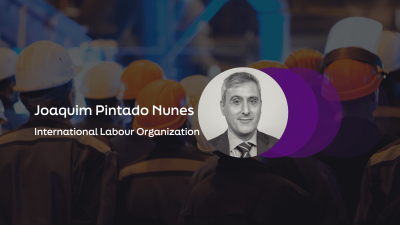
Improving access to redress for workers vulnerable to violence and harassment in South Asia
Experts discuss the factors that make some workers more vulnerable than others to violence and harassment.
This page is approximately a 3 minute read
This page was published on

The world risk poll provides a new perspective on what is happening to people in the workplace in relation to exposure to occupational hazards bringing in the dimension of lived experiences and perceptions.
I find these insights extremely useful to complement other data and validate existing thinking on variations between sectors, countries and regions. The results are also useful to advise national, regional and global policy.
We all know that caring for the safety and health of our workforce is even more pressing as the world faces a global health crisis today. Keeping workers and workplaces safe is an indispensable requirement for maintaining the health of all and restoring the normal course of our lives. This crisis in stimulating increased attention to the need of protecting workers from the risk of contagion and other occupational risks. I hope this will not be short term but rather that this pandemic demonstrates the importance of safety and health not only with regard to the work environment but in all the implications that the lack of prevention entails for people, societies and economies.
I find the results of the poll extremely inspiring and bringing to mind a number of new correlations worth exploring. A broader focus on work-related diseases would be interesting and could shed light on other acute and chronic illnesses that workers suffer in certain occupations. Another important area to observe could be validating the workers’ perceptions against existing workplace safety and health policies and practices. Once workers have reported a serious injury as 19% have expressed through the poll, it would be interesting to examine, how these incidents were managed, compensated, or if corrections and improvements were made. Workers’ perceptions on rehabilitation and return to work efforts could also help evaluate progress in this area.
Another dimension to consider could be the crosscutting issues that influence the results. These include whether workers who were part of the poll worked for instance in the informal or formal economy, private or public sectors, had access to health services or not, among other elements. The poll explores worker mental health, and it would be relevant to explore the interplay between work and life and between occupational safety and health and other working conditions and arrangements in relation to mental health.
Overall, I commend the effort and thinking that went behind the design and execution of the world risk poll, as well as the in depth analysis of the findings that bring a new global angle to the story of safety and health at work. It is non-negotiable that keeping our workplace safe from harm is a global priority to keep our economies going, our people happy and our societies functioning with physical and mental wellbeing, stability and sustainability.